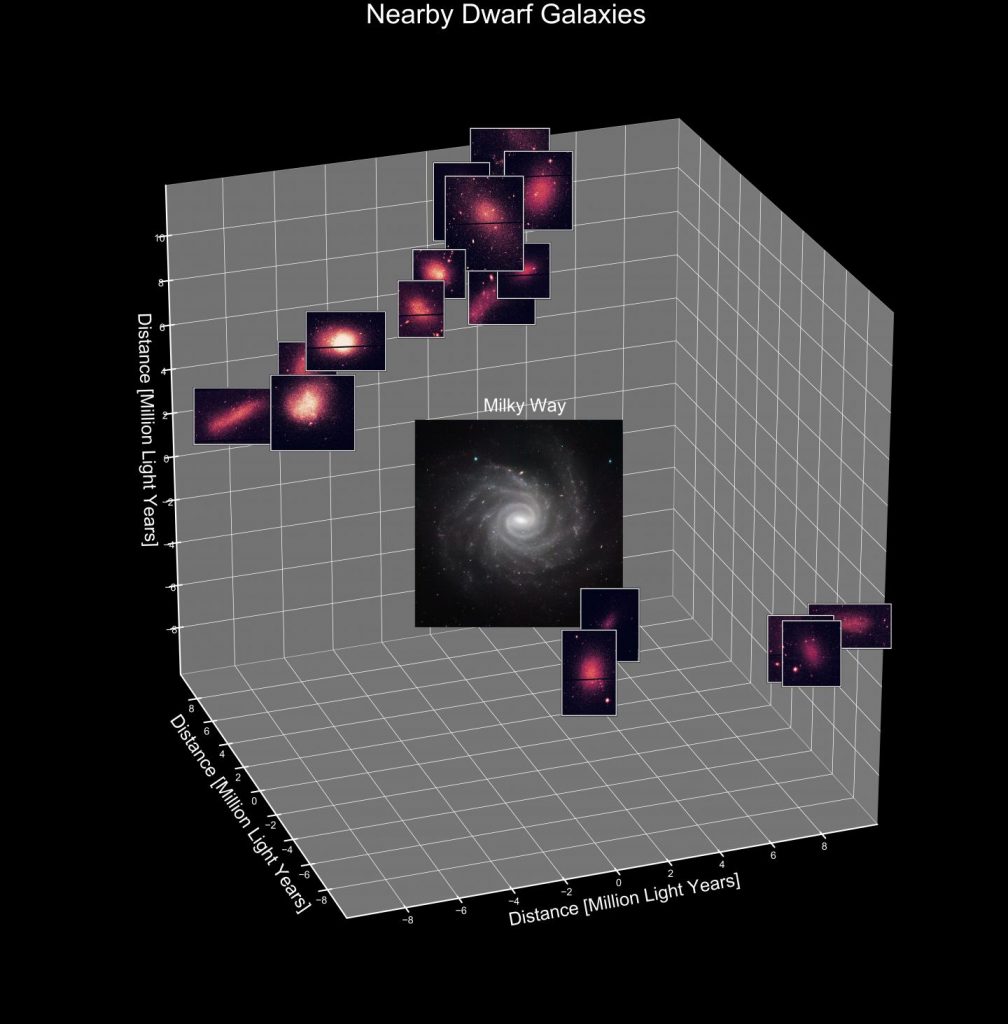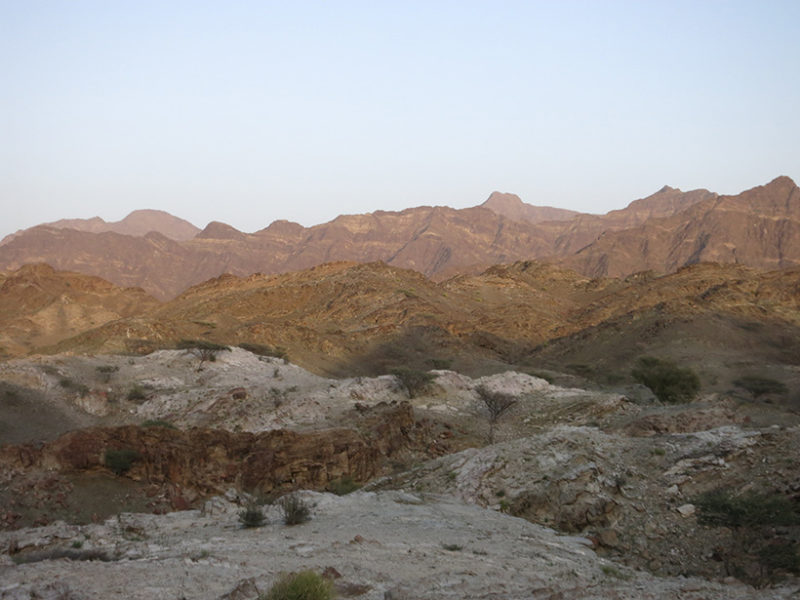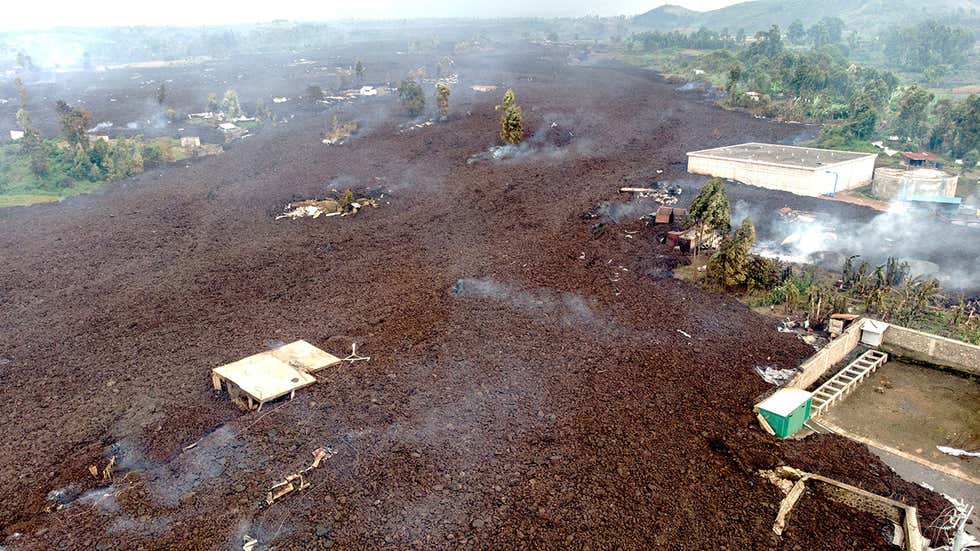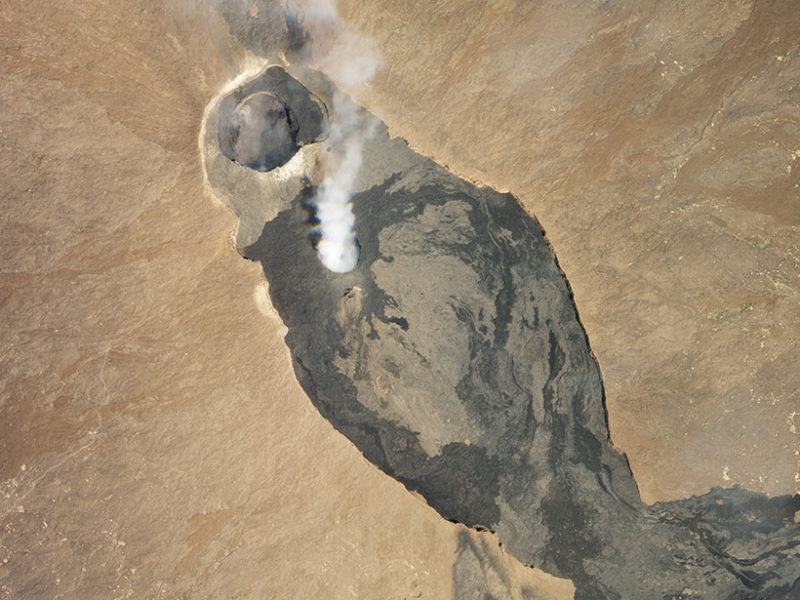Physicists have built a pair of microscopic drums and, through quantum entanglement, have found they beat together in perfect synchrony. Plus, dwarf galaxies, China’s Zhurong rover, the East African Rift, and more about ice giants.
Media
Transcript
Hello and welcome to the Daily Space. I am your host Dr. Pamela Gay.
And I am your host Beth Johnson.
And we are here to put science in your brain.
In school, they teach us that science is done by making a hypothesis, testing your hypothesis, and then revising your hypothesis as needed. Astronomy doesn’t really work that way. We generally start by looking at the universe, saying “Wow that’s weird,” finding a theorist to help us come up with a bunch of testable theories about what is going on, and then we test our theories to figure out what best matches reality and sometimes, along the way, our telescopes find new details that radically change what we thought we know.

In general, when we look around the universe, we assume that while events like star formation may be more common at one point in time or another, the specific triggers for star formation were somewhat random, and different generations of stars have formed a bit randomly over time. At least, that was our thinking.
A new set of observations of dwarf galaxies introduces confusion. In looking at 36 dwarf galaxies within about thirteen million light-years, astronomers found oddly synced star formation histories. For each system, they used two different methods to understand the ages of the stars and found that the present ages indicate there was a quiet period from about three to six billion years ago followed by a period of increased star formation enduring the past three billion years.
It’s unclear if farther out galaxies also have this pattern of behavior. This work appears in The Astrophysical Journal and was led by Charlotte Olson, who said: The James Webb Space Telescope … will be the ideal way to add that new data to find out just how far outwards from the Milky Way this ‘baby boom’ extended.”
Beyond not knowing how far-reaching this pattern is, we also have no idea why this pattern is. According to coauthor Eric Gawiser: The full impact of the discovery is not yet known as it remains to be seen how much our current models of galaxy growth need to be modified to understand this surprise. If the result cannot be explained within our current understanding of cosmology, that would be a huge implication, but we have to give the theorists a chance to read our paper and respond with their own research advances.
It’s been a while since we encountered an acronym so bad we needed to take a moment to highlight its glory with a BABIES award (that’s Bad Acronyms & Backronyms in Everyday Science). This paper, folks, let me introduce you to ANGST: the ACS Nearby Galaxy Survey Treasury. ACS is the Advanced Camera for Surveys. So really, this is the Advanced Camera for Surveys Nearby Galaxy Survey Treasury, which is a name that is giving me ANGST, so well done, namers. Well. Done.
As much as Pamela, who studied dwarf galaxies for her master’s work, might want to talk about galaxies and galaxy surveys all day long, I’m happy to say I have rocky stories to bring some less weird science to your day. Researchers studied the uplifted edges of continental crust along the Oman-United Arab Emirates border and made some interesting breakthroughs in understanding how these beautifully banded landmasses may have formed.

Our world is made up of a series of plates that are constantly moving as they float on the hot, plastic-like mantle below. In some cases, the plates are rubbing edges, in others they’re moving apart, and sometimes they’re crashing together. This particular plate boundary is a subduction zone, where a lower density plate is crashing into a higher density plate and is getting forced under.
Since different minerals form at different pressures and temperatures, it’s possible to look at the now tilted edges of these plates to see how different layers formed over time. According to a paper appearing in Tectonics with first author T.K. Ambrose, as the higher density plate dove under the lower density plate, its top layer adhered to the bottom of the lower density plate on top.
Initially, this was a hot process with significant pressure, but over time, more and more rock was added at lower and lower temperatures but not higher pressures. This seems to indicate that things were cooling, but the pressure just never let up on this rock. Now we know that when we look at these banded uplifts, sometimes you’re seeing just one tectonic plate, and sometimes you’re looking at a plate that has scraped layers of another plate, like so many layers of wallpaper.
I am constantly finding myself learning new things about geology that my astrophysics degree just didn’t prepare me for. The amount of scraping, digging and hammering for instance.

Today, rovers from two nations are exploring the surface of Mars, wielding the tools needed to explore rocks as they go. As we’ve discussed pretty extensively, Mars Perseverance, the NASA-led rover, is in Jezero crater collecting rocks. Now, we are pleased to say, the recently landed Chinese rover, Zhurong, is departing its landing platform and exploring the soils of Utopia Planitia on a mission to look for life.
Zhurong isn’t China’s only recent rover. On the Moon, a series of Chang’e rovers are exploring progressively harder to get to sites, and recently the Chang’e 5 mission even returned a lunar rock sample. This mission landed in Oceanus Procellarum – the dark Mare sea – near Mons Rumker, an extinct volcano on the northwest edge of the visible face of the Moon. In addition to collecting rocks, the mission also explored its surroundings and sent back science data. Now, some of the more interesting features are getting names. Specifically, we can now introduce the landing site, Statio Tianchuan, mountains Mons Hua and Mons Heng, and the craters Pei Xiu, Shen Kuo, Liu Hui, Song Yingxing, and Xu Guanqui.
Back here on Earth, geological processes have resulted in the loss of at least 32 people. Mount Nyiragongo erupted over the weekend, sending lava and toxic gases into the city of Goma in the Democratic Republic of the Congo (DRC). The city has a population of about 1.5 million people, and an evacuation was ordered. Many of the recorded deaths were caused by traffic accidents from the resulting crush of vehicles leaving.

The glow from the lava could be seen in numerous images and news feeds, and because of the type of lava involved, it flowed rapidly into the nearby city. Piles of it reached up to three stories, buildings have been destroyed, and water supplies are threatened. Additionally, a magnitude 4.7 earthquake hit just this morning near the border between the DRC and Rwanda, increasing fears that the recently refilled crater lake, now full of lava, could crack and send even more lava into the area.
Nyiragongo is a terrifying volcano, and I always made a group in my Hazards class present on the last eruption in 2002, which killed 250 people. The eruption before that, in 1977, killed thousands, and that number is inexact at best. The volcano is considered by many volcanologists to be the most dangerous in Africa, with its fast-moving lava and proximity to millions of people. The lava is incredibly fluid, more like a Hawaiian flow than an Andean explosion, and the speed of flow has been clocked at upwards of 40 miles per hour. Additionally, Nyiragongo sends huge amounts of carbon dioxide into the atmosphere. This gas is heavier than normal air, so it stays near the ground and becomes a deadly hazard for both people and animals.
On top of everything, this latest eruption had no clear warning signals in advance.
So what is the cause of this volcano? We’ve discussed the formation of hot spot volcanoes like those in Iceland and Hawaii, which are fairly free-flowing due to the fresh magma erupting from the mantle. We’ve talked about island arc volcanoes like those in Japan and the Aleutian Islands, where one subducting plate is going under the other, the rock is melting, and causing chains of volcanoes to form. This works on land as well and creates mountain chains like the Andes. But Nyiragongo is a different beast altogether.

It turns out that a piece of Africa is trying to break apart from the full continent, and the resulting tear is called the East African Rift. The rift runs south from the Red Sea to Mozambique. The plates involved are the Nubian plate in the northwest, the Somalian plate to the southeast, and the Arabian plate to the east. They are moving away from each other, and the continental crust is thinning out, allowing fresh magma to rise up from the mantle and make its way quickly to the surface.
Now if you add in the fact that Nyiragongo is more of a mountain peak than a flat shield volcano, you get some additional gravitational influences on that fast lava flow, increasing its speed to the dangerous numbers we see in this situation.
But all the science in the world doesn’t make the loss of human life any easier, and we hope things settle in the region soon.
One of the things we learn about science is that it doesn’t act with emotion. Volcanoes form according to the dynamics of the Earth, and they arbitrarily release nutrients that enrich the soils and spew lava that destroy villages. Science just is, and humanity must either use science to advance ourselves or ignore science at sometimes terrible costs. I’m personally in favor of leveraging what we know about our universe to advance things. But hey, maybe that’s just me.
One of the coolest areas of development at the moment is quantum theory. Initially studied to allow us to explain the colors of stars, the behavior of dense gases, and other such phenomena we don’t generally experience, quantum theory is starting to take a practical turn as folks work to develop quantum computers: computers that don’t limit their bits to ones and zeros but instead view everything as the probabilities of the result being one or zero. But how do you store a probability? This is where quantum entanglement and spooky action at a distance come into play.

According to quantum mechanics and demonstrated in many senior lab classes at universities around the world, it’s possible to produce two particles together that will have mirrored properties, and while one particle’s characteristics might change from measurement to measurement, they will still, somehow, stay instantaneously in sync, even if separated by distances that make communications at lightspeed far too slow.
If this hurts your brain, don’t feel bad. Einstein coined the phrase “spooky action at a distance” because he didn’t really like this part of quantum theory.
Initially, folks entangled photons (particles of light) and then electrons, and over time, they sorted out how to quantum entangle larger and more complex systems. According to a Gizmodo article: Physicists have entangled as many as 18 photons at a time, where the state of one photon is related to the other 17.
While that’s cool, it doesn’t help sort quantum computers. What we need is a system that can be a one or a zero and has states in between while it transitions. Through a creative leap that amazes me, scientists came up with the idea of using tiny aluminum drums, ten microns across, that can be excited into beating by hitting them with microwave-colored photons. By quantum entangling two such drums, they have two systems that can be separated, that have a probability of being one or zero at any given moment, and because the drums can be separated, this single innovation has the potential to be used as either quantum bits or the backbone of a quantum internet, maybe. This stuff is hard, and it’s sometimes difficult to know when our theories wander into the land of sci-fi where our actual technology can’t follow.
This work was led by Shlomi Kotler and appears in two papers in science Science with summary articles appearing just about everywhere. We’ll be linking to the Gizmodo and Nature articles I read to help understand these results. This stuff is hard, but if it works, this is the next big development in computing. This could be the follow-on to the vacuum tube, the transistor, and the silicon circuit.
And this could be the start to understanding how to send information instantly between points without the lag of light travel time. While stuff can’t move faster than light, the wavefunction connecting two vastly separated objects is a single thing, and a change to one connected particle changes the entirety of that wavefunction. No rules of physics need to be broken. We just might be able to make the vastness of space a bit easier to bear with the help of quantum mechanics.
A new paper in The Astrophysical Journal Letters lays out new parameters for determining how Neptune’s orbit has changed over the millennia due to interactions with the nearby field of Kuiper Belt Objects (KBOs). Neptune was originally closer to our Sun but migrated out early on in our solar system’s history, and its resulting interactions with the KBOs likely scattered some into the inner solar system and caused the Late Heavy Bombardment that left the inner planets scarred with craters.

Now, this new research shows that Neptune’s eccentricity was not quite as non-existent as previously thought, meaning its orbit was far less circular at the time. It’s not a huge difference visually, but mathematically, it affected how the Kuiper Belt Objects ended up in their various orbits and inclinations, some more inclined than others. And as always, this information can be used to examine exoplanetary systems in their various ages to give us hints of what else and where else to look for more planets and smaller bodies.
Speaking of our wonderful ice giants, remember last week, we talked about lab experiments done using a diamond anvil that led to the discovery that Uranus and Neptune could have a magnesium-rich water layer in their mix? Well, I found out that there was other research done using a diamond anvil that tried to solve the mystery of the ice giants’ strange magnetic fields.
The results of these lab experiments were published in the Proceedings of the National Academy of Sciences, and they honestly didn’t provide any solid answers to the mystery. The team was trying to determine if that liquid layer, full of various components like water, methane, and ammonia as well as various ions like the afore-mentioned magnesium, could create a magnetically stable region that influenced the overall field. And they found that the ammonia used in the sample, despite its being in what is described as a “superionic ammonia phase” still behaved like a regular liquid. So it wasn’t viscous enough to be the cause of any stability in the flow of the ions.
A null result is still a result, and that just means more research needs to be done. When they have more results, we’ll bring them to you here.
For now, though, this has been the Daily Space.
Learn More
Thirty-six Synchronized Dwarf Galaxies Birth Stars
- Rutgers press release
- “Star Formation Histories from Spectral Energy Distributions and Color–magnitude Diagrams Agree: Evidence for Synchronized Star Formation in Local Volume Dwarf Galaxies over the Past 3 Gyr,” Charlotte Olsen et al., 2021 May 24, The Astrophysical Journal
Scraping the Top Off Continents to Make a Sole
- A Closer Look at the Creation of a Metamorphic Sole (Eos)
- “Burial, Accretion, and Exhumation of the Metamorphic Sole of the Oman-UAE Ophiolite,” T. K. Ambrose et al., 2021 March 23, Tectonics
China Roves Moon and Mars
Mount Nyiragongo Erupts, Resulting in Deaths
- Earthquake Strikes Near Congo’s Mount Nyiragongo Volcano, Raising Worries of Second Eruption (Weather.com)
- Are We Seeing a New Ocean Starting to Form in Africa? (Eos)
- Mount Nyiragongo just erupted—here’s why it’s one of Africa’s most dangerous volcanoes (National Geographic)
Quantum Entangled Drums Keep the Beat
- These Drums Beat in Perfect Synchrony Because They’re Quantumly Entangled (Gizmodo)
- “Direct observation of deterministic macroscopic entanglement,” Shlomi Kotler et al., 2021 May 7, Science
Neptune’s Eccentricity Influenced by Kuiper Belt
- A Highly Eccentric Journey (AAS Nova)
- “Eccentric Early Migration of Neptune,” David Nesvorný, 2021 February 24, The Astrophysical Journal Letters
Ice Giants’ Magnetic Fields Still a Mystery
- ETH Zürich press release
- “Fluid-like elastic response of superionic NH3 in Uranus and Neptune,” Tomoaki Kimura and Motohiko Murakami, 2021 April 6, PNAS
Credits
Written by Pamela Gay and Beth Johnson
Hosted by Pamela Gay and Beth Johnson
Audio and Video Editing by Ally Pelphrey
Content Editing by Beth Johnson
Intro and Outro music by Kevin MacLeod, https://incompetech.com/music/

 We record most shows live, on Twitch. Follow us today to get alerts when we go live.
We record most shows live, on Twitch. Follow us today to get alerts when we go live.